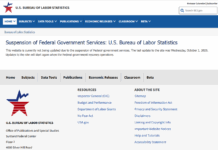In a speech at the Bank of Mexico, BIS General Manager Jaime Caruana flashes major warnings about central bank independence and the effectiveness of emergency techniques that are being used to prop up the economies of the world.
In his speech, Caruana attempted to outline the magnitude of the interventions undertaken by the world’s central banks since 2007 saying “Since late 2007, central bank total assets in the major advanced economies have more than doubled to exceed $9 trillion, more than a quarter of GDP. And the maturity of these assets has lengthened. Prolonged interventions of this magnitude would have been unthinkable even as late as in 2008.” Caruana followed up later by saying “Since the end of 2007, the total debt of the G20 non-financial sector, both private and public, has risen by almost $35 trillion dollars.”
Caruana also spoke about the effectiveness of quantitative easing and the future reality for central banks trying to unwind their interventions. He says “five years on, questions arise about the limits to such measures.” And “excessive monetary accommodation can make it too easy to postpone necessary repairs and reforms.”
Expectations are another point of worry for Caruana, who says “prolonged monetary policy accommodation has ended up overburdening central banks and posing longer-term risks to their reputation and credibility. There are signs of a widening gap between what central banks are expected to deliver and what they actually can deliver.”
Other than creating a bubble in the asset markets, the Fed’s own research on QE shows that it has had little effect on the economy. Unwinding the massive program could send rates skyrocketing, and continuing it risks potential inflation.“In mid-year we saw this process in reverse. The mere discussion of a prospective tapering by the Federal Reserve triggered a sell-off in global markets. Equities and domestic bonds in emerging market economies initially registered abrupt and sizeable losses, exchange rates depreciated and, in some cases, policy had to be tightened despite weakening macroeconomic conditions.”
But after such large-scale, unconventional interventions, monetary policy makers may have a hard time acting independently going forward. Caruana says that “active use of central bank balance sheet measures blurs the boundary between monetary and fiscal policies. As regular tools for monetary policy, these measures could therefore burden monetary policy with tasks outside its realm. And this, in turn, could threaten central banks’ operational independence in the pursuit of price and financial stability.”
It is doubtful that monetary policy makers have taken into account how difficult it will be to unwind their positions. Look for more uncertainty ahead.



